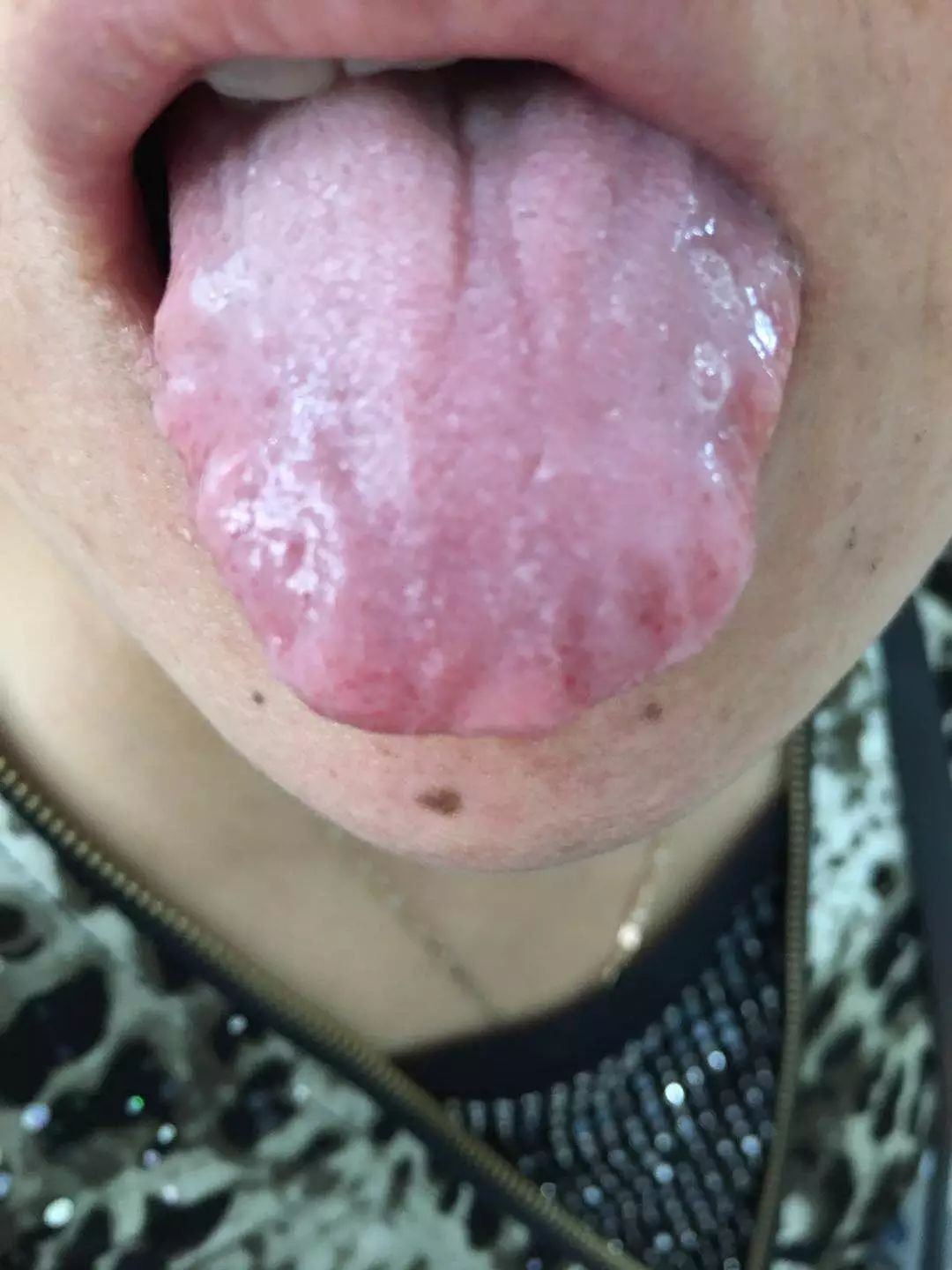This subscription account is hosted by the Hu Xishu Research Studio of the Beijing University of Chinese Medicine’s Inheritance Project. Mr. Hu Xishu is a renowned modern TCM practitioner and educator, celebrated in Japan as a prominent researcher of the “Shang Han Lun” with a unique theoretical system in Chinese medicine.
Question: Some people have a noticeably enlarged tongue with teeth marks, but their pulse is not weak or feeble, and may even be somewhat rapid. Does this still indicate a Taiyin disease, or could it be a combination with other meridian diseases?
Your question is particularly insightful. In contemporary society, despite improvements in medical and economic conditions and better nutritional status, a lack of exercise and irregular diet lead to more cases of spleen and stomach deficiency, resulting in obesity and phlegm-dampness. This aligns with Zhang Zhongjing’s description in the “Jin Gui Yao Lue” that “honored individuals have weak bones and abundant flesh,” indicating some internal injuries.
Clinically, diagnosing phlegm-dampness can be done through observation alone. 1. Observe the body shape. 2. Tongue diagnosis. Typically, individuals with phlegm-dampness tend to be somewhat overweight, which is why ancient wisdom states that “overweight individuals often have dampness.” In tongue diagnosis, it often presents as a swollen tongue with teeth marks, and the tongue coating appears moist and slippery. The teeth marks are caused by the tongue being pressed against the teeth, leading to injury on the tongue due to the hardness of the teeth, resulting in these marks. A swollen tongue with teeth marks indicates excess moisture and phlegm-dampness in the body. More noticeably, upon waking, one may observe edema in the eyelids and lower limbs, which follows the same principle.

△ Swollen tongue with prominent teeth marks

△ Besides the swollen tongue with teeth marks, the tongue coating is moist and slippery
Pulse diagnosis helps determine deficiency or excess by assessing strength. If the pulse is weak and feeble, it indicates a deficiency syndrome, while the generation of phlegm-dampness is attributed to Taiyin disease (internal deficiency and cold syndrome). From an organ perspective, it involves dysfunction of the lungs, spleen, and kidneys, with spleen dysfunction being more common. Therefore, a weak pulse combined with a swollen tongue with teeth marks can generally confirm phlegm-dampness due to Taiyin disease, often seen in spleen deficiency and phlegm-dampness patterns.
If the pulse is not weak or feeble, and may even be somewhat slippery, large, or rapid, it indicates that the deficiency is not prominent. The treatment for phlegm-dampness follows Zhang Zhongjing’s principle: “For those with phlegm-dampness, one should use warming herbs to harmonize it.” However, we need to analyze further; phlegm-dampness is a pathological factor and also a new pathogenic factor. It is important to note that phlegm-dampness is a manifestation. Phlegm-dampness results from various causes leading to abnormal fluid metabolism and accumulation, so merely eliminating phlegm-dampness is insufficient. Traditional Chinese medicine emphasizes that treatment must address the root cause, so on one hand, we need to eliminate phlegm-dampness, and on the other hand, we must treat the root cause to prevent recurrence, addressing both the symptoms and the root.
Chronic phlegm-dampness is often due to deficiency syndromes, categorized under Taiyin disease. From an organ perspective, it includes spleen deficiency with phlegm-dampness and yang deficiency with water retention, requiring reinforcement of the righteous qi and elimination of pathogenic factors, focusing on strengthening the spleen and eliminating dampness, warming yang, and promoting water metabolism. However, if there is no deficiency syndrome and the pulse is strong, then reinforcement is unnecessary, and the focus can be solely on eliminating the pathogenic factors, represented by formulas such as Er Chen Tang (Er Chen Decoction) and Ban Xia Hou Po Tang (Ban Xia and Magnolia Decoction). In more severe cases, formulas like Shi Zao Tang (Ten Jujube Decoction), Da Xian Xiong Tang (Major Chest-Draining Decoction), and Xiao Xian Xiong Tang (Minor Chest-Draining Decoction) follow similar treatment principles.
Thus, the treatment of phlegm-dampness requires differentiation between deficiency and excess. For deficiency syndromes, both tonifying and purging methods are employed, while for excess syndromes, direct elimination of pathogenic factors is applied. The determination of deficiency or excess is primarily assessed through pulse diagnosis. By evaluating whether the pulse is weak or strong, we can help determine the treatment approach.
Additionally, there is a special situation that may relate to long-standing phlegm-dampness, where stagnation transforms into heat, presenting a slippery, large, and rapid pulse, indicating a combined Yangming and Taiyin disease. In this case, one can focus solely on eliminating the pathogenic factors or add some heat-clearing herbs. Once phlegm-dampness is eliminated, the deficiency signs will become apparent, at which point we need to add tonifying herbs, as treatment must seek the root cause. Therefore, determining the six meridian affiliations, treatment methods, and selection of formulas and herbs still relies on comprehensive diagnosis through the four examinations.
Author: Ma Jiajun
Affiliation: Beijing Hospital of Traditional Chinese Medicine, Capital Medical University
Previous article: Mr. Feng often tells us that mastering, applying, and inheriting classical formulas is the best tribute to Mr. Hu Xishu.
In a blink of an eye, the National Classical Formula Forum has been held nine times. This year marks the tenth National Classical Formula Forum and the ninth International Classical Formula Academic Conference. Last year’s theme was to commemorate the 120th anniversary of Mr. Hu Xishu’s birth, and this year’s theme is “Jueyin Disease.” We welcome you to Xishan Badachu for friendship and discussion. Click to read more.
1.Minutes of the Eighth International Classical Formula Academic Conference and the Ninth National Classical Formula Forum, commemorating the 120th anniversary of Mr. Hu Xishu’s birth.
2.2018 National Classical Formula Forum Lecture Notes: Listening to Teacher Chen Yanli on Ban Xia Xie Xin Tang (Ban Xia Decoction for Heart-Draining).
3.The National Classical Formula Forum is ten years old this year, with the theme of “Jueyin Disease.”

